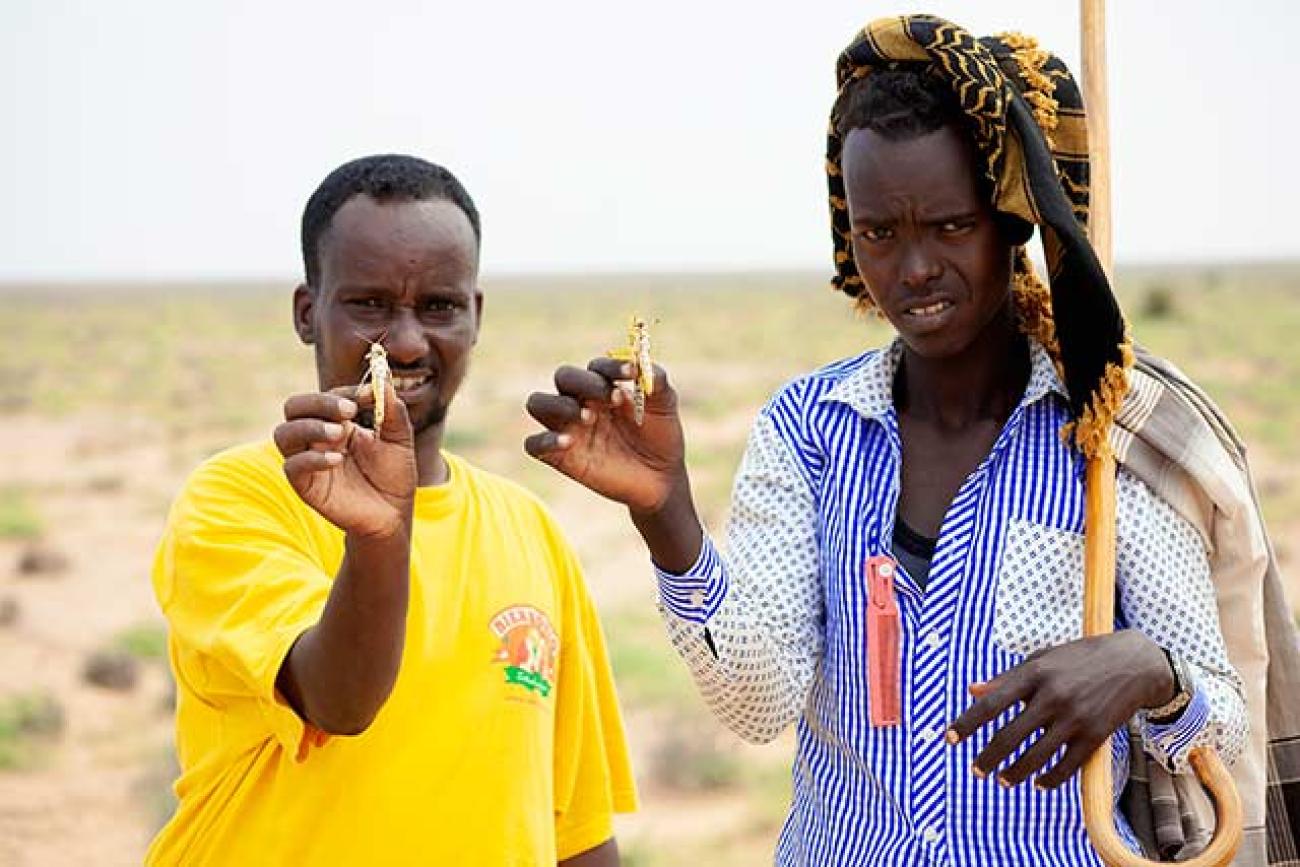Somalia gears up for a long fight against Desert Locust

Somalia faces the worst Desert Locust outbreak in over 25 years, according to an emergency update issued today by the country office of FAO
Somalia faces the worst Desert Locust outbreak in over 25 years, according to an emergency update issued today by the country office of the Food and Agriculture Organization of the United Nations in Somalia and FAO’s Desert Locust Information Service in Rome.
Desert Locust breeding is ongoing in Galmudug (Mudug), Puntland and Somaliland. An estimated 70 000 hectares of land have been infested by hoppers and breeding adults, which have already damaged crops and pasture in Ethiopia and Somalia. The pest is affecting pasture and threatening staple food crops of households in rural areas.
Over the next six months, more than 100 000 hectares of land will require direct control interventions in Somalia. The fight against the Desert Locust calls for immediate institutional, infrastructural and technical investments for larger-scale actions in 2020 and beyond.
“We are talking about a medium- to long-term intervention. The impact of our actions in the short term is going to be very limited, but we can make a difference to support livelihoods and avoid further disastrous consequences for the next Gu season in 2020 if we act now”, says Etienne Peterschmitt, FAO Representative in Somalia a.i, adding that FAO requires an additional USD 3 million for the initial response.
Unanticipated scale, transboundary consequences and challenges in fighting the outbreak
The situation is far worse than anticipated and has been exacerbated by exceptionally high rainfall and cyclone Pawan. If unaddressed, the Desert Locust will likely spread to main crop growing areas in southern Somalia, Djibouti, Eritrea and northeastern Kenya.
So far, the locust infestations have been confined to rangeland and grassland areas in Puntland and Somaliland. However once adults form immature swarms, there is a greater possibility that some swarms will migrate south towards the Ethiopian border area with southern Somalia (Hirshabelle, Jubaland and South West Federal Member states) while others will remain in place, mature and lay eggs for another generation of breeding, according to FAO.
“The immature swarms are the most destructive stage and can seriously threaten 2019 Deyr (October-December) season food and fodder production,” says Alphonse Owuor, Crop Protection Officer of FAO in Somalia. Limited resources and capacity compared to the immense scale of the outbreak, coupled with continued insecurity in central and southern Somalia, pose a serious challenge to combat this unprecedented massive outbreak, which is expected to become a long fight that will require concerted efforts at regional level.
Thanks to funding from the United Kingdom of Great Britain and Northern Ireland through its Department for International Development (DFID), FAO is already working very closely with Ministries of Agriculture and partner organizations on surveillance and control efforts in Puntland and Somaliland to prevent the spread of the pest to southern and central Somalia. FAO has also facilitated surveys covering over 20 000 hectares in Puntland and Somaliland, and 20 members of staff from the Ministry of Agricultural Development have been trained on the application of biopesticides in Somaliland, where spray operations have just started to control breeding. “Given the scale of the disaster, aerial spraying using airplanes would have been the ideal control measure. However, security conditions in most parts of Somalia do not allow it,” says Peterschmitt.
Background on Desert Locust
Desert Locust is a transboundary pest with the ability to spread over large areas, causing considerable damage to pasture and crops. Outbreaks occur periodically but are complex to predict. When not managed at the place of origin or breeding ground, they can lead to losses of up to 100 percent of food and fodder crops.
A typical Desert Locust swarm can contain up to 150 million locusts per square kilometre. Swarms migrate with the wind and can cover 100-150 km a day. An average swarm will destroy enough crops that could feed 2 500 people for one year.
Link to original story





